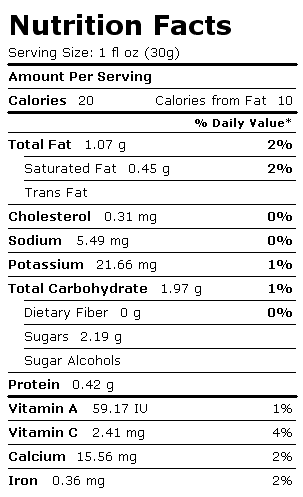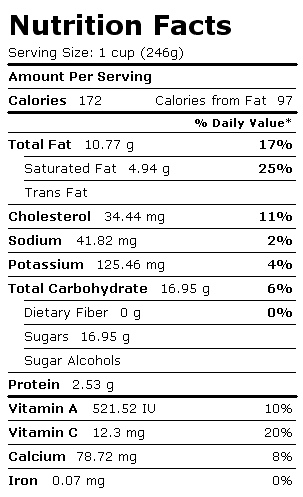When I wrote the post on Breastmilk and its components compared to Coca-Cola (found HERE) , I decided that it would be a good idea to also write a post on Breastmilk compared to formula. I not only want to go over their ingredients difference, but, also the preparation, their availability, their sterility and more. I want to break apart both down to last bit and show the distinct difference between the two. I will start with the ingredients and move on from there.
This is the ingredients for formula:
Water
Carbohydrates
Lactose
Corn maltodextrin
Protein
Partially hydrolyzed reduced minerals whey protein concentrate (from cow’s milk)
Fats
Palm olein
Soybean oil
Coconut oil
High oleic safflower oil (or sunflower oil)
M. alpina oil (Fungal DHA)
C.cohnii oil (Algal ARA)
Minerals
Potassium citrate
Potassium phosphate
Calcium chloride
Tricalcium phosphate
Sodium citrate
Magnesium chloride
Ferrous sulphate
Zinc sulphate
Sodium chloride
Copper sulphate
Potassium iodide
Manganese sulphate
Sodium selenate
Vitamins
Sodium ascorbate
Inositol
Choline bitartrate
Alpha-Tocopheryl acetate
Niacinamide
Calcium pantothenate
Riboflavin
Vitamin A acetate
Pyridoxine hydrochloride
Thiamine mononitrate
Folic acid
Phylloquinone
Biotin
Vitamin D3
Vitamin B12
Enzyme
Trypsin
Amino acid
Taurine
L-Carnitine (a combination of two different amino acids)
Nucleotides
Cytidine 5-monophosphate
Disodium uridine 5-monophosphate
Adenosine 5-monophosphate
Disodium guanosine 5-monophosphate
Soy Lecithin
Carbohydrates (energy source)
Lactose
Oligosaccharides (see below)
Carboxylic acid
Alpha hydroxy acid
Lactic acid
Proteins (building muscles and bones)
Whey protein
Alpha-lactalbumin
HAMLET (Human Alpha-lactalbumin Made Lethal to Tumour cells)
Lactoferrin
Many antimicrobial factors (see below)
Casein
Serum albumin
Non-protein nitrogens
Creatine
Creatinine
Urea
Uric acid
Peptides (see below)
Amino Acids (the building blocks of proteins)
Alanine
Arginine
Aspartate
Clycine
Cystine
Glutamate
Histidine
Isoleucine
Leucine
Lycine
Methionine
Phenylalanine
Proline
Serine
Taurine
Theronine
Tryptophan
Tyrosine
Valine
Carnitine (amino acid compound necessary to make use of fatty acids as an energy source)
Nucleotides (chemical compounds that are the structural units of RNA and DNA)
5’-Adenosine monophosphate (5”-AMP)
3’:5’-Cyclic adenosine monophosphate (3’:5’-cyclic AMP)
5’-Cytidine monophosphate (5’-CMP)
Cytidine diphosphate choline (CDP choline)
Guanosine diphosphate (UDP)
Guanosine diphosphate - mannose
3’- Uridine monophosphate (3’-UMP)
5’-Uridine monophosphate (5’-UMP)
Uridine diphosphate (UDP)
Uridine diphosphate hexose (UDPH)
Uridine diphosphate-N-acetyl-hexosamine (UDPAH)
Uridine diphosphoglucuronic acid (UDPGA)
Several more novel nucleotides of the UDP type
Fats
Triglycerides
Long-chain polyunsaturated fatty acids
Docosahexaenoic acid (DHA) (important for brain development)
Arachidonic acid (AHA) (important for brain development)
Linoleic acid
Alpha-linolenic acid (ALA)
Eicosapentaenoic acid (EPA)
Conjugated linoleic acid (Rumenic acid)
Free Fatty Acids
Monounsaturated fatty acids
Oleic acid
Palmitoleic acid
Heptadecenoic acid
Saturated fatty acids
Stearic
Palmitic acid
Lauric acid
Myristic acid
Phospholipids
Phosphatidylcholine
Phosphatidylethanolamine
Phosphatidylinositol
Lysophosphatidylcholine
Lysophosphatidylethanolamine
Plasmalogens
Sphingolipids
Sphingomyelin
Gangliosides
GM1
GM2
GM3
Glucosylceramide
Glycosphingolipids
Galactosylceramide
Lactosylceramide
Globotriaosylceramide (GB3)
Globoside (GB4) Sterols
Squalene
Lanosterol
Dimethylsterol
Methosterol
Lathosterol
Desmosterol
Triacylglycerol
Cholesterol
7-dehydrocholesterol
Stigma-and campesterol
7-ketocholesterol
Sitosterol
β-lathosterol
Vitamin D metabolites
Steroid hormones
Vitamins
Vitamin A
Beta carotene
Vitamin B6
Vitamin B8 (Inositol)
Vitamin B12
Vitamin C
Vitamin D
Vitamin E
a-Tocopherol
Vitamin K
Thiamine
Riboflavin
Niacin
Folic acid
Pantothenic acid
Biotin
Minerals
Calcium
Sodium
Potassium
Iron
Zinc
Chloride
Phosphorus
Magnesium
Copper
Manganese
Iodine
Selenium
Choline
Sulpher
Chromium
Cobalt
Fluorine
Nickel
Metal
Molybdenum (essential element in many enzymes)
Growth Factors (aid in the maturation of the intestinal lining)
Cytokines
interleukin-1β (IL-1β)
IL-2
IL-4
IL-6
IL-8
IL-10
Granulocyte-colony stimulating factor (G-CSF)
Macrophage-colony stimulating factor (M-CSF)
Platelet derived growth factors (PDGF)
Vascular endothelial growth factor (VEGF)
Hepatocyte growth factor -α (HGF-α)
HGF-β
Tumor necrosis factor-α
Interferon-γ
Epithelial growth factor (EGF)
Transforming growth factor-α (TGF-α)
TGF β1
TGF-β2
Insulin-like growth factor-I (IGF-I) (also known as somatomedin C)
Insulin-like growth factor- II
Nerve growth factor (NGF)
Erythropoietin
Peptides (combinations of amino acids)
HMGF I (Human growth factor)
HMGF II
HMGF III
Cholecystokinin (CCK)
β-endorphins
Parathyroid hormone (PTH)
Parathyroid hormone-related peptide (PTHrP)
β-defensin-1
Calcitonin
Gastrin
Motilin
Bombesin (gastric releasing peptide, also known as neuromedin B)
Neurotensin
Somatostatin
Hormones (chemical messengers that carry signals from one cell, or group of cells, to another
via the blood)
Cortisol
Triiodothyronine (T3)
Thyroxine (T4)
Thyroid stimulating hormone (TSH) (also known as thyrotropin)
Thyroid releasing hormone (TRH)
Prolactin
Oxytocin
Insulin
Corticosterone
Thrombopoietin
Gonadotropin-releasing hormone (GnRH)
GRH
Leptin (aids in regulation of food intake)
Ghrelin (aids in regulation of food intake)
Adiponectin
Feedback inhibitor of lactation (FIL)
Eicosanoids
Prostaglandins (enzymatically derived from fatty acids)
PG-E1
PG-E2
PG-F2
Leukotrienes
Thromboxanes
Prostacyclins
Enzymes (catalysts that support chemical reactions in the body)
Amylase
Arysulfatase
Catalase
Histaminase
Lipase
Lysozyme
PAF-acetylhydrolase
Phosphatase
Xanthine oxidase
Antiproteases (thought to bind themselves to macromolecules such as enzymes and as a result
prevent allergic and anaphylactic reactions)
a-1-antitrypsin
a-1-antichymotrypsin
Antimicrobial factors (are used by the immune system to identify and neutralize foreign objects,
such as bacteria and viruses.
Leukocytes (white blood cells)
Phagocytes
Basophils
Neutrophils
Eoisinophils
Macrophages
Lymphocytes
B lymphocytes (also known as B cells)
T lymphocytes (also known as C cells)
sIgA (Secretory immunoglobulin A) (the most important antiinfective factor)
IgA2
IgG
IgD
IgM
IgE
Complement C1
Complement C2
Complement C3
Complement C4
Complement C5
Complement C6
Complement C7
Complement C8
Complement C9
Glycoproteins
Mucins (attaches to bacteria and viruses to prevent
them from clinging to mucousal tissues)
Lactadherin
Alpha-lactoglobulin
Alpha-2 macroglobulin
Lewis antigens
Ribonuclease
Haemagglutinin inhibitors
Bifidus Factor (increases growth of Lactobacillus bifidus - which is a
good bacteria)
Lactoferrin (binds to iron which prevents harmful bacteria from using the
iron to grow)
Lactoperoxidase
B12 binding protein (deprives microorganisms of vitamin B12)
Fibronectin (makes phagocytes more aggressive, minimizes inflammation, and repairs
damage caused by inflammation)
Oligosaccharides (more than 200 different kinds!)
Yeah, so you can see...there is a major difference just in ingredients.
Let's look at the nutrition level of both.
Formula:
Now let's talk "How to prepare"...
How to prepare a bottle of formula:
Wash your hands and the equipment you will use with hot soapy water and rinse well.
Sterilize all equipment by boiling in a pan of water until it comes to a boil. Place lid on pot and leave equipment in the water until needed.
Clean and disinfect the surface where you will be making the bottle, along with your hands.
Boil some water in a pan until it comes to a rolling boil. Do not let it get below 70 degrees Celsius.
Read formula can and place the exact amount of water in the bottle along with the exact amount of formula.
Place lid on bottle and swirl to stir.
hold bottle under cool running water to cool down to the correct feeding temp.
(By the way, powdered formula is NOT sterile and MUST be made with HOT water in order to kill any bacteria in it)
How to prepare to breastfeed:
Undo shirt and bra cup latch(if you have one on) and latch baby on.
What a difference huh? All you really need to do to nurse a baby is latch it on. With a formula feeder, you need time and preparation if you do it correctly. Most people don't get the water that hot before they make the formula. I wonder How many babies were diagnosed with a stomach bug instead of formula mishap and improper prep? I can imagine it's a lot...
Equipment needed for formula feeding:
Bottles/nipples
bottle brushes
formula
pan
Equipment needed to breastfeed:
Breasts
(Anything beyond the is a want, not a need)
Cost of formula:
Approx: $20/can (which lasts 2 weeks for a newborn) so, $40/month, $480/yr if that is all they drank, but, we all know babies drink far more as they get older. So, let's at least double that number. $960...and that's only if it costs $20/can.
Cost of nursing:
$0 It's free.
Another thing is Breastmilk contains antibodies and more that formula will NEVER contain. It changes as your child grows and gets older, formula does not. You don't have to lug bottles and formula, nor worry if you prepared it correctly. You never have to worry if you have enough money to buy a can of formula if you nurse. If baby goes to sleep with a bottle of formula in it's mouth, you run the risk of bottle rot on it's teeth because of the sugars in it. Ew. If baby goes to sleep with a boob in it's mouth, you don't have to worry. Breastmilk has antimicrobial properties that keep it from happening. The breast is even a great way to develop baby's mouth properly unlike a bottle nipple which causes an unnatural palate and jaw structure.
Another big kicker is the breast cancer connection. Formula feeding does nothing to help. Breastfeeding lowers baby's chances and mommas chance of developing breast cancer. That alone should make some women jump on this chance.





















